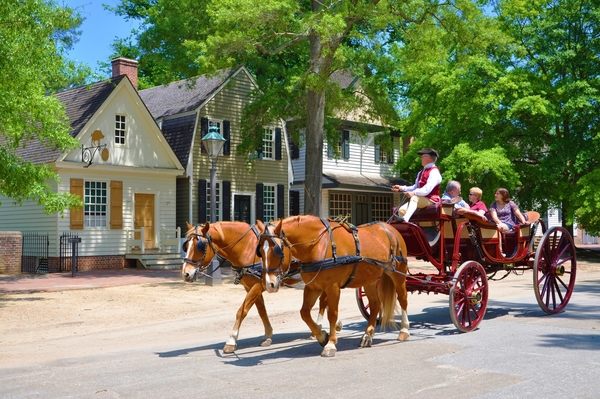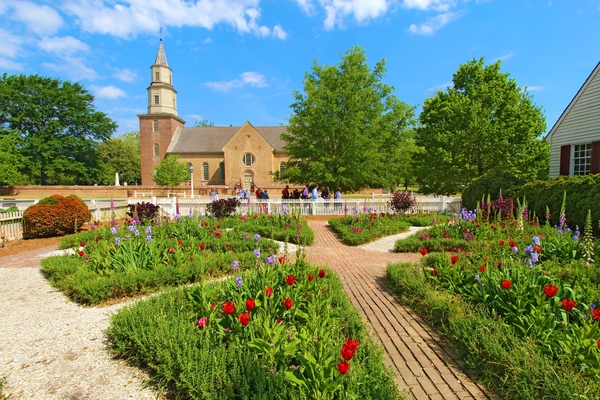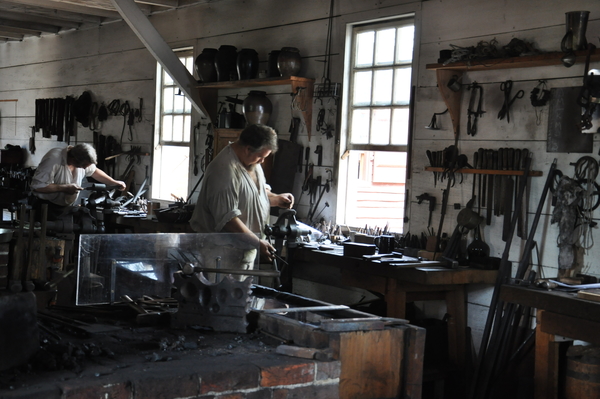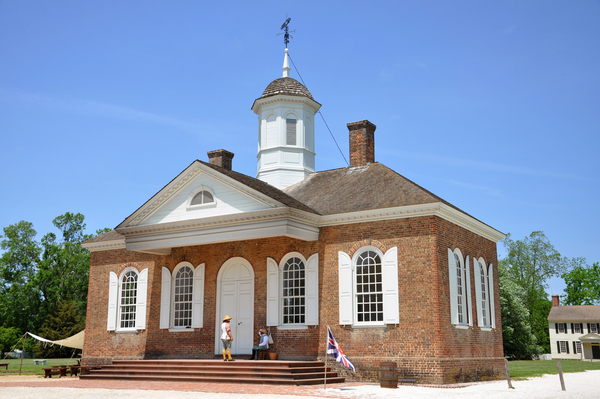

William Byrd III was a man of great stature in Colonial Williamsburg, Virginia. His vast estate included mills, warehouses, vessels and fisheries, and he owned hundreds of slaves. However due to his lavish lifestyle and gambling addiction, he could not live within his income, lost his wealth and is believed to have died by suicide in 1760.
Christiana Campbell operated one of Williamsburg’s most successful taverns, hosting the likes of George Washington and Thomas Jefferson. Washington’s diary includes entries indicating that he dined there10 times in two months.
Robert Carter III, was a wealthy owner of land and slaves, who fathered 17 children with his wife, Frances Anne. He is best remembered for freeing his slaves as quickly as he could under laws then in effect in Virginia.
These historic figures played parts in the fascinating tableau that makes Colonial Williamsburg a perfect place to relive pages from the past. Presentations by authentically attired re-enactors, tours led by factually based characters and a wide variety of other interpretive programs combine to involve visitors in the interest, information and fun.
Williamsburg’s meticulously restored 17th-to-19th century historic area provides the Colonial and Revolutionary War-era setting in which chapters from the past are dramatically revived. The 300-acre site clings proudly to countless vestiges of its original appearance and ambience.
Williamsburg Served as Capital of the Virginia Colony for Almost a Century
For nearly a century, from 1699 to 1780 Williamsburg, which was named for King William III of England, served as the capital of the Virginia Colony. That vast settlement stretched west to the Mississippi River, north as far as the Great Lakes and encompassed the territory of eight present-day states.
In its early heyday, the town of about 2,000 residents was the cultural, social and political center of the Colonial world. Before Thomas Jefferson relocated the Virginia capital to Richmond in 1781, he, George Washington, Patrick Henry and other patriots frequented its shops, taverns and other establishments.

While Williamsburg’s fortunes declined after the Revolution, the town and the important role it played in the New World were not forgotten. In 1926, John D. Rockefeller Jr. launched an effort to restore the setting to its former splendor and the result is one of the largest and most impressive history projects in the United States. Colonial structures were renovated to their 18th-century appearance, and missing buildings were reconstructed on their original sites.
Today, more than 600 history-touched buildings – imposing public structures and modest dwellings, bustling taverns and crowded shops – line tree-shaded streets that echo the clip-clop of horse-drawn carriages.

Gardens and “dependencies,” like free-standing kitchens, smoke houses and privies, add to the atmosphere and authenticity.

Today it’s the People who Bring Colonial Williamsburg to Life
Along with this elegant and historically accurate scene, it primarily is people who bring historic Colonial Williamsburg to life. Character interpreters dressed in Colonial style clothing, many depicting real-life former residents of the town, converse with visitors in period grammar as they go about their daily tasks.
Chefs in several of the restaurant kitchens use “receipts” (recipes) from 18th-century cookbooks to prepare original dishes on the hearth. Presentations of dance, singing and other leisure time activities demonstrate aspects of life of the half of Colonial Williamsburg’s population who were black.
Costumed artisans use 18th-century tools to fashion items that closely resemble those made by their Colonial predecessors, including reproduction toys, pottery and pewterware. A blacksmith turns out everyday items that were part of Colonial life. The bookbinder carefully hand-stitches cover boards for a new volume. A silversmith creates wares that would have appealed to the colony’s wealthier members. A shoemaker fashions men’s boots “with good thread well twisted.”

Among other historic tradespeople are a basket weaver, cabinet maker and milliner. The results of their efforts are sold in stores located along Duke of Gloucester Street.
Enjoyment and Education Go Hand-in-Hand at Colonial Williamsburg
Leaving no stone unturned, literally as well as figuratively, historians, archaeologists and others who are active in enhancing the setting and programs transform research and construction projects into learning experiences for the public.
For example, trials take place in the Courthouse, which has been reconstructed as closely as possible to its original form. Architectural historians scoured plans, court records and other documents for clues to its former appearance. Then costumed carpenters used tools and techniques of Colonial times to restore the building, as visitors looked on.

As a result, figures from the past depict life today as it once was in surroundings that would be familiar to the people whom they represent. For those who visit Colonial Williamsburg, the result of such attention to detail is an all-encompassing trip back through time.
They may enjoy a theatrical comedy and a traveling magic show reminiscent of entertainment in the 18th century. Among choices for shoppers are an inkwell, silver coffee pot and other souvenirs and gifts that have been hand-fashioned by craftsmen in ways of old. Those interested in legalities may observe Colonial justice in action, and perhaps even play a role in the court proceedings. It’s all part of the immersion in the past at Colonial Williamsburg, Virginia, a destination that gives new meaning to the term “living history.”
For more information, log on to www.colonialwilliamsburg.org
Authors: Fyllis Hockman and Victor Block are a husband-wife team of experienced travel journalists who have gallivanted throughout the United States, and to nearly 80 countries around the world, and written about what they have seen, done and learned. Their articles have appeared in newspapers across the country and on websites across the Internet, and they each have won numerous writing awards. They love to explore new destinations and cultures and uncover off-the-beaten-path attractions. Read more of their work at The Rambling Writers
- Broward County, Florida: When the Winter Sun Hides Behind a Cloud - April 16, 2024
- Nature is Neat in Broward County, Florida - April 1, 2024
- Margaritaville: A Time-Honored Memorial to Jimmy Buffett - March 15, 2024
